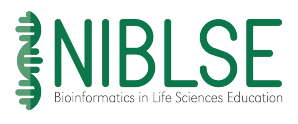The following guide outlines the responsibilities and expectations for each member of an incubator.
Step 1. Identifying Desired Outcomes
After a submitted learning resource is selected for inclusion in an incubator, the NIBLSE Resource Review Committee will identify a Managing Editor to lead the incubator team. The Managing Editor will work with the Submitting Author(s) to specify a set of objectives to bring the submitted resource to maturation. They will also propose an appropriate timeline and meeting schedule (typically weekly or bi-weekly meetings over 4-8 weeks) for incubator activities.
Step 2. Composition & Implementation
Drawing from a list of volunteers identified by the NIBLSE Leadership Team, the Managing Editor in consultation with the Submitting Author(s) will select members from the NIBLSE community to participate in the following roles:
- The Expert User possesses expertise in the content or skills pertinent to the learning resource. Together with the Submitting Authors, they insure that mature learning resources are high quality and appropriate for the intended audience.
- The Novice User provides the perspective of potential adopters to ensure the resource and supporting documents are sufficiently detailed for biologists lacking expertise in bioinformatics.
- The QUBES Liaison supports incubator activities, which rely heavily on the QUBES infrastructure.
- Each incubator has the option of including an Evaluation Liaison, who can provide a connection to the Assessment Validation Comment and contribute insights into potential assessment instruments for measuring the effectiveness of the learning resource in the undergraduate biology classroom.
See our June 2020 Biochemistry and Molecular Biology Education publication to learn more about how Incubators work and their success in refining and supporting the incorporation of bioinformatics resources into life science classrooms.
